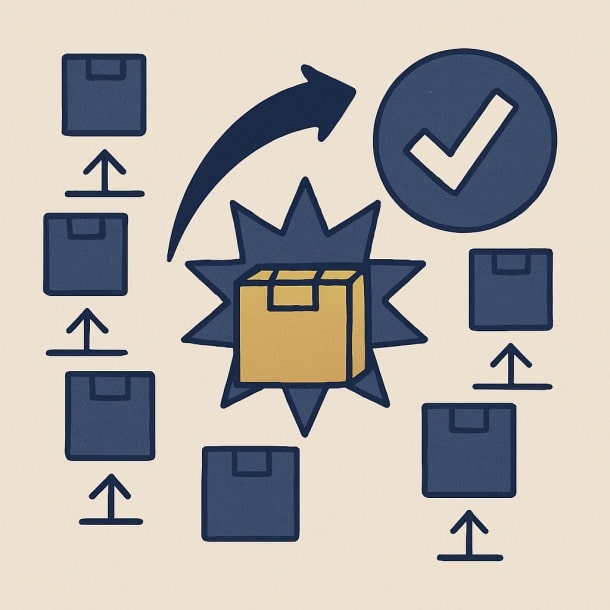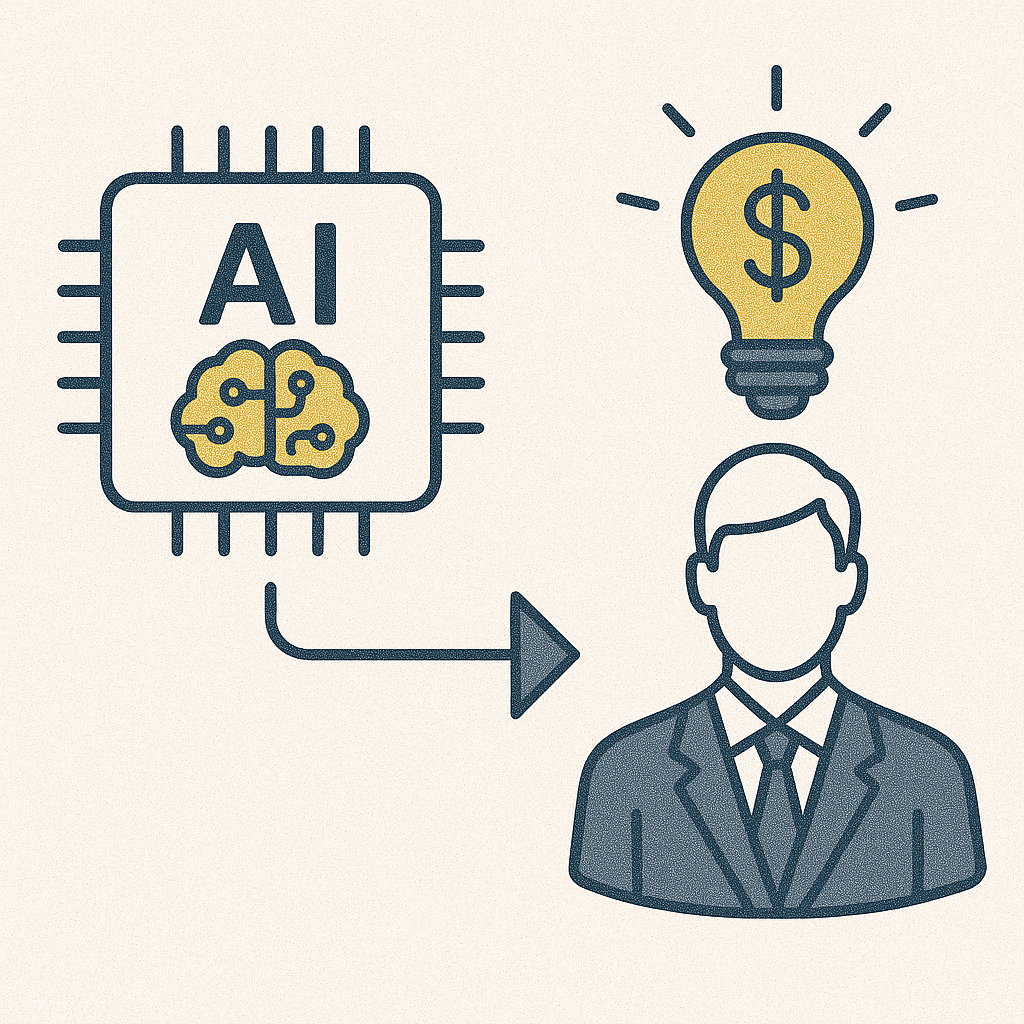Enhancing Your Marketing Presence In the boardroom of a Fortune 500 company, two marketing directors present competing strategies for the upcoming product launch. The first presenter, armed with meticulously researched data and innovative campaign concepts, speaks hesitantly, qualifying every statement with phrases like “I think maybe” and “this might work.”
Leveraging Analyst Relations for AI Products
Leveraging Analyst Relations for AI Products How to engage with industry analysts to gain favorable reviews and recognition for AI products—transforming from vendor pitch to strategic partnership Three years ago, a promising AI startup with breakthrough computer vision technology found itself struggling to break into enterprise accounts despite superior performance
Marketing a Product in a Crowded and Competitive Landscape
Marketing a Product in a Crowded and Competitive Landscape Marketing a Product in a Crowded and Competitive Landscape: Differentiating Your Offering and Standing Out. In today’s hypercompetitive B2B technology market, standing out isn’t just advantageous—it’s existential. With waves of new startups emerging daily and established players continually expanding their
How Marketers Can Overcome Challenges with a Positive Mindset in Marketing
How Marketers Can Overcome Challenges with a Positive Mindset in Marketing In the unforgiving arena of modern marketing, where campaign failures can trigger executive scrutiny, budget cuts can derail strategic initiatives, and algorithmic changes can render months of careful optimization work obsolete overnight, the notion of maintaining a positive mindset
Future-Proofing Your AI Marketing
Future-Proofing Your AI Marketing Future-Proofing Your AI Marketing: Adapting to Evolving Technologies. The enterprise AI landscape moves at breakneck speed. What seemed revolutionary six months ago is now table stakes, and tomorrow’s breakthrough is already being whispered about in research labs and startup incubators. For marketers selling AI products and
From AI Features to Enterprise Benefits
From AI Features to Enterprise Benefits From AI Features to Enterprise Benefits: Translating AI Capabilities for Your Audience. Picture this: You’re in a boardroom presenting your AI solution to a Fortune 500 company. The CTO nods approvingly as you explain your neural network architecture, but the CFO’s eyes glaze
Explaining Complex AI: Simplifying Technical Concepts for Business Audiences
Explaining Complex AI: Simplifying Technical Concepts for Business Audiences Picture this: You’re sitting in a boardroom, armed with the most revolutionary AI solution the enterprise world has ever seen. Your neural networks are pristine, your algorithms are cutting-edge, and your technical specifications would make any data scientist weep with joy.
Effective Conflict Resolution Strategies for Marketing Professionals
Effective Conflict Resolution Strategies for Marketing Professionals Marketing environments are breeding grounds for conflict. The volatile combination of creative egos, data-driven perfectionism, compressed timelines, subjective decision-making, and high-stakes outcomes creates a perfect storm where interpersonal tensions not only emerge but intensify rapidly. Unlike conflicts in more predictable business functions, marketing
Leveraging Interactive Content in Product Marketing
Leveraging Interactive Content in Product Marketing Leveraging Interactive Content in Product Marketing: Engaging Audiences with Quizzes, Polls, and Calculators. The Imperative for Interactive Content in B2B Product Marketing In today’s digital-first business environment, capturing and maintaining audience attention has become increasingly challenging for B2B technology marketers. While still valuable, traditional
Demystifying AI Buzzwords for Marketers
Demystifying AI Buzzwords for Marketers Demystifying AI Buzzwords: A Glossary for Marketers. A helpful glossary defining common AI terms and buzzwords in a clear, concise manner for enterprise marketing communications Picture this: You’re in a client meeting with the CTO of a Fortune 500 company, confidently explaining how your “multimodal
Building an AI Community: Fostering Engagement and Advocacy
Building an AI Community: Fostering Engagement and Advocacy Strategies for creating and nurturing a thriving community around an AI product, encouraging user adoption, feedback, and evangelism The enterprise AI landscape is cluttered with products that promise transformation but struggle to achieve meaningful adoption. While many companies focus on perfecting their
Time Management Strategies for Busy Marketers
Time Management Strategies for Busy Marketers Time is the ultimate paradox in marketing. It’s simultaneously abundant and scarce, predictable and chaotic, measurable and elusive. While other business functions often operate within relatively stable temporal rhythms—accounting has monthly close cycles, sales has quarterly targets, operations has production schedules—marketing exists in a
Leveraging Early Adopters and Beta Programs for Product Feedback
Leveraging Early Adopters and Beta Programs for Product Feedback Leveraging Early Adopters and Beta Programs for Product Feedback: The Value of Engaging Early Users in the Development Process. The Critical Role of Early User Feedback The difference between market success and failure often hinges not on having a perfect
From Pilot to Production: Marketing Strategies for AI Rollouts
From Pilot to Production: Marketing Strategies for AI Rollouts A guide for marketing an AI product through different stages of enterprise adoption, from initial pilot programs to full-scale deployment. The enterprise AI market is littered with the remains of promising pilots who never made it to production. According to recent
Crafting Compelling AI Case Studies: From Data to Dollars
Crafting Compelling AI Case Studies: From Data to Dollars How to develop case studies that actually drive enterprise AI sales (and why most companies get this completely wrong) Here’s a painful truth about AI marketing: Most case studies are worthless for driving enterprise sales. I’ve reviewed hundreds of AI case
Embracing Discipline in Marketing
Embracing Discipline in Marketing In the chaotic symphony of modern marketing, where notifications ping incessantly, campaign deadlines collide, and the pressure to produce viral content never ceases, one skill stands as the ultimate differentiator: self-control. While the industry celebrates creativity, innovation, and agility, it’s discipline—the unglamorous art of restraint, focus,
Identifying and Leveraging Product Advocates
Identifying and Leveraging Product Advocates Identifying and Leveraging Product Advocates: Turning Satisfied Customers into Marketing Assets. In the competitive landscape of B2B technology startups, traditional marketing approaches are increasingly less effective on their own. Today’s business decision-makers are skeptical of polished marketing messages and instead seek authentic validation from
AI Value Chain Impact Worksheet: Mapping Benefits for Enterprise Customers
AI Value Chain Impact Worksheet: Mapping Benefits for Enterprise Customers The enterprise AI market is saturated with solutions that claim transformative impact, yet many fail to articulate specific, measurable value propositions aligned with how enterprises actually operate. This worksheet provides a systematic framework for mapping your AI solution’s impact across
AI Marketing Content Calendar Template: Planning for Impact
AI Marketing Content Calendar Template: Planning for Impact The Marketing Content Calendar template provides a strategic framework for planning AI product marketing content that goes beyond superficial “AI-powered” claims to deliver meaningful, educational, and conversion-focused messaging across the entire customer journey. Content Strategy Framework Core Messaging Pillars for AI Products
The “Why Now?” for AI: Creating Urgency in Enterprise Marketing
The “Why Now?” for AI: Creating Urgency in Enterprise Marketing Every seasoned enterprise sales professional has lived through this scenario: You’ve delivered a flawless product demonstration, the technical evaluation went smoothly, and the business case is rock-solid. The prospect nods approvingly, thanks you for your time, and promises to “circle


















